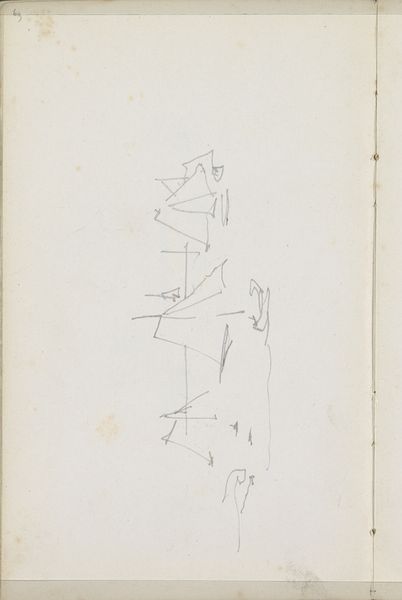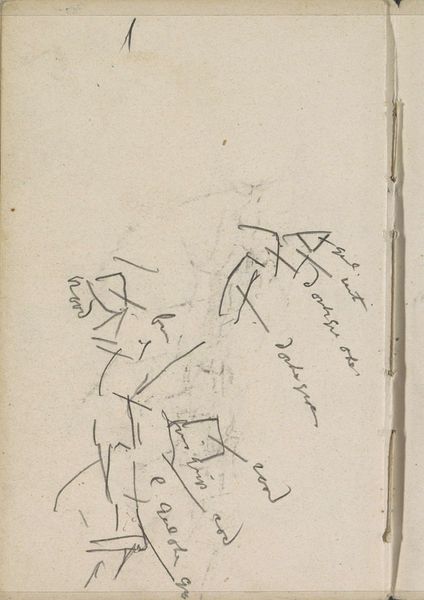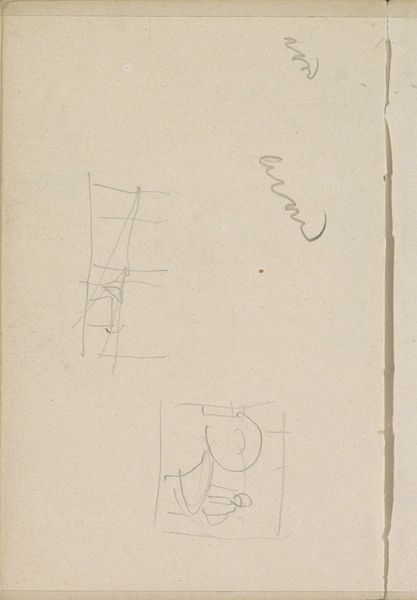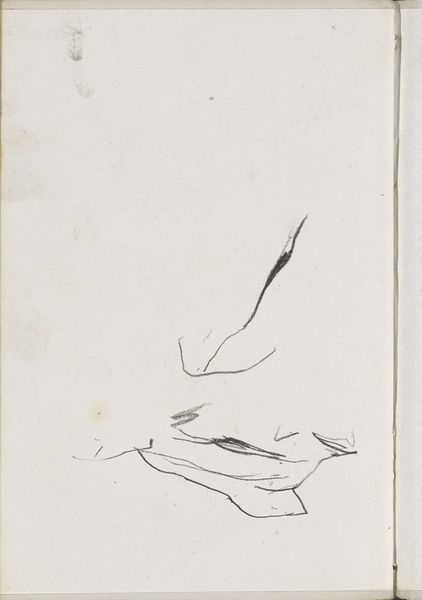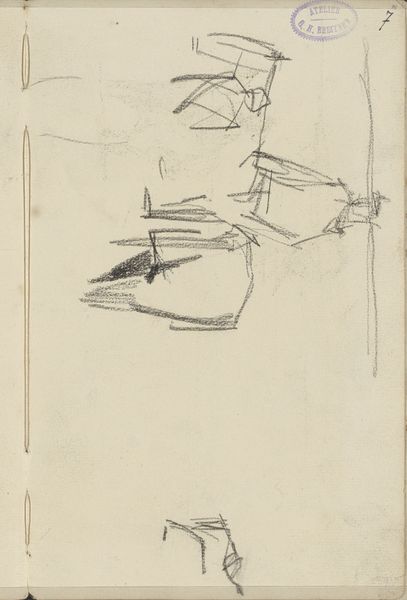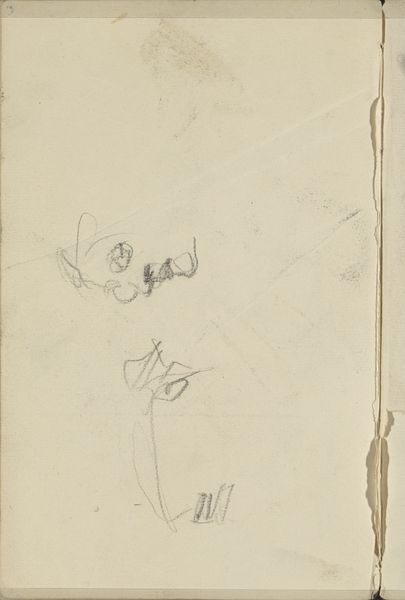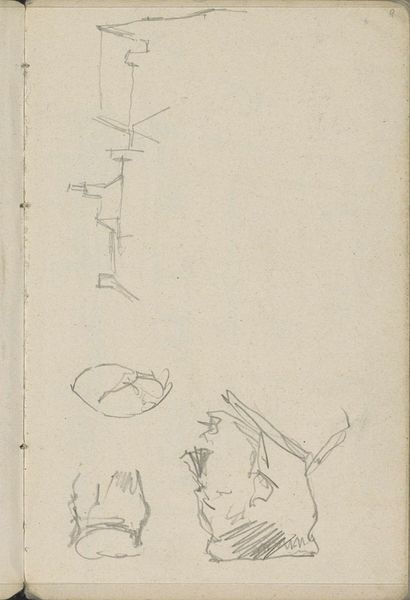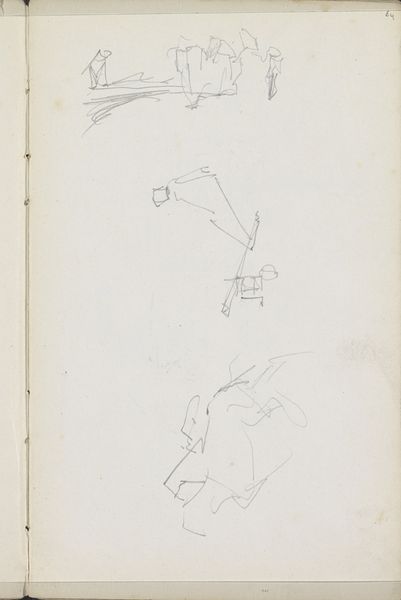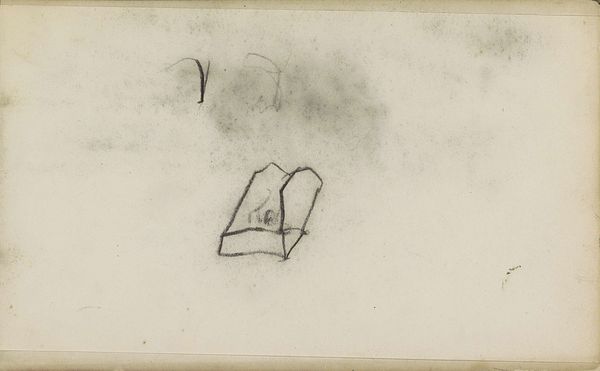
drawing, pencil
#
drawing
#
dutch-golden-age
#
figuration
#
pencil
Copyright: Rijks Museum: Open Domain
Curator: Breitner's "Figuurstudies," dating from approximately 1886 to 1898, offers an intimate glimpse into the artist's process, employing pencil to capture studies of figures. Editor: There is a kind of immediacy to the marks; they seem hastily rendered, prioritizing capturing the angle of the form over intricate detail. Curator: Indeed. Breitner, embedded within the societal currents of his time, was known for capturing the energy of urban life, and his studies of figures, often women, reflected both an artistic and a social observation of individuals navigating an increasingly industrialized society. It’s important to also note that his approach to women as subjects can be interpreted within the context of the evolving role of women in Dutch society. Editor: From a formalist standpoint, the contrast is stark. There's this expansiveness of blank space, almost amplifying the focused density within the lower cluster of marks depicting clothing. Then higher up, we find a carefully described foot and lower leg, creating an interplay of positive and negative volume. Curator: Yes, and these quick sketches—capturing body positions—can be tied to the political dynamics shaping individuals in society. Are these figures portrayed in a position of labor, of leisure, or of simple everydayness? What societal narratives can we read from their positions? Editor: What intrigues me is that even within these incomplete fragments, Breitner demonstrates an acute sensitivity to form. The negative spaces created around and between the pencil lines almost breathe, generating the suggestion of dimensionality where, in essence, only contour exists. It’s a subtle choreography of line and void, isn't it? Curator: It makes you think about who these figures are and what their place was within the specific moment in history in which Breitner made this work, right? I mean, it’s a study—so this would have contributed to larger artistic gestures that shaped the aesthetic landscape of the time. Editor: A powerful glimpse, indeed, into the skeletal beginnings of form and, perhaps, of narrative as well.
Comments
No comments
Be the first to comment and join the conversation on the ultimate creative platform.
